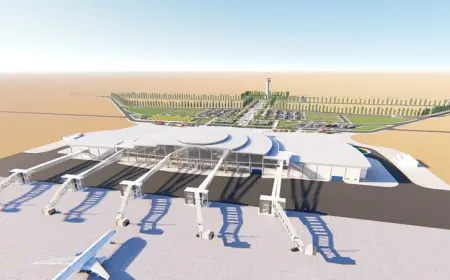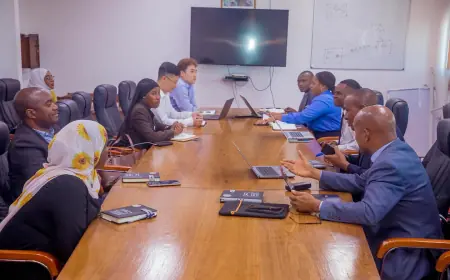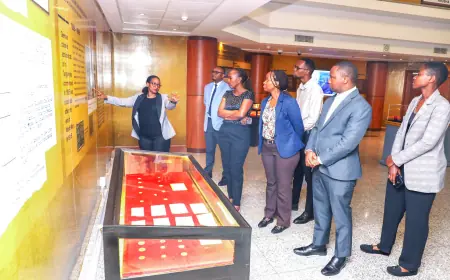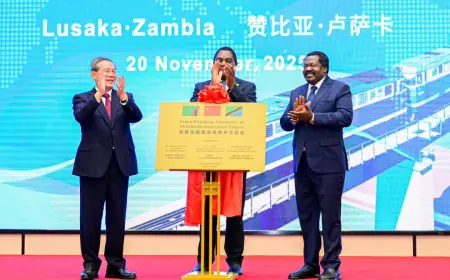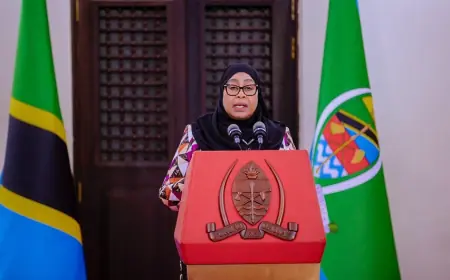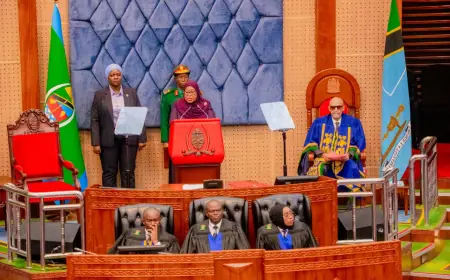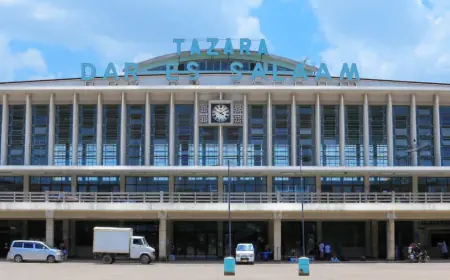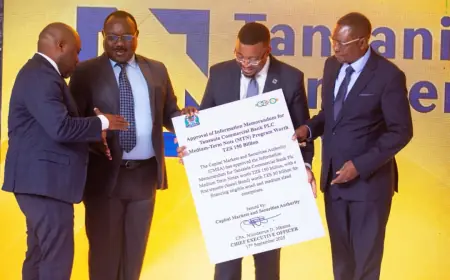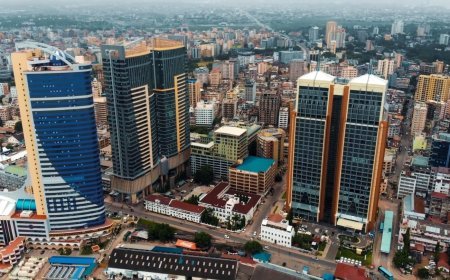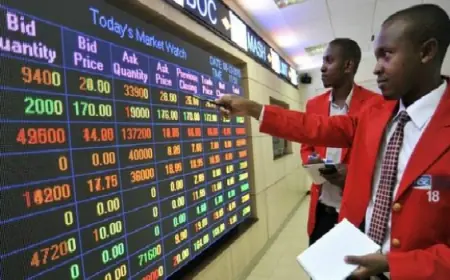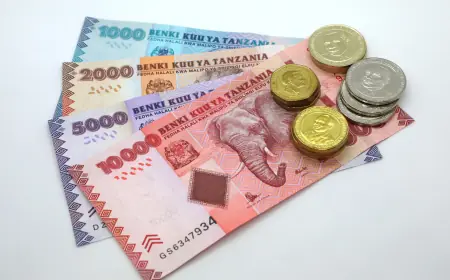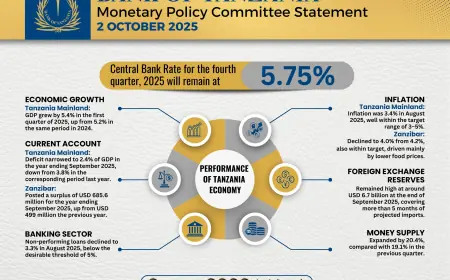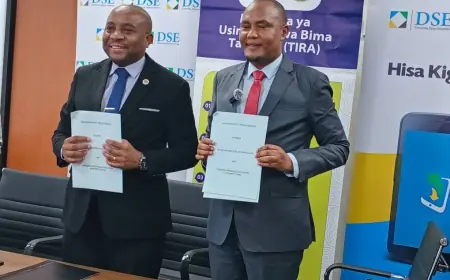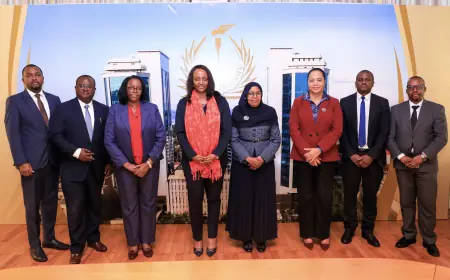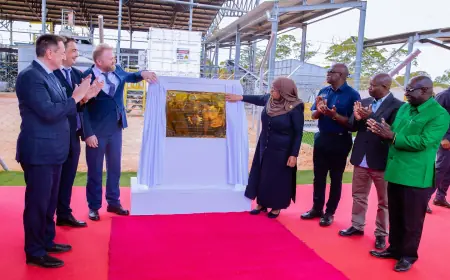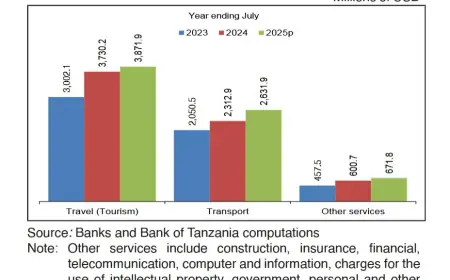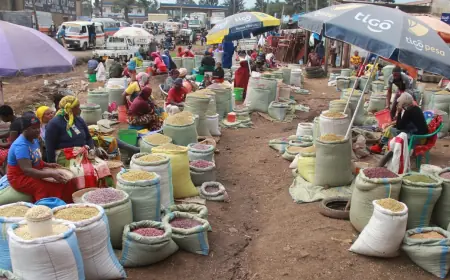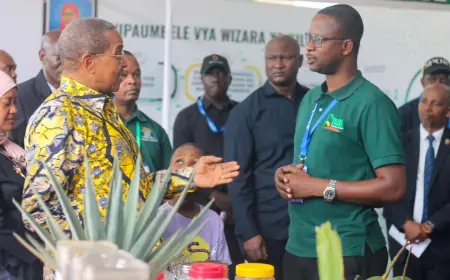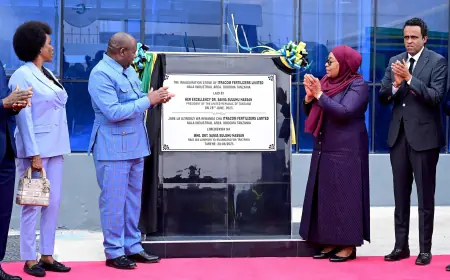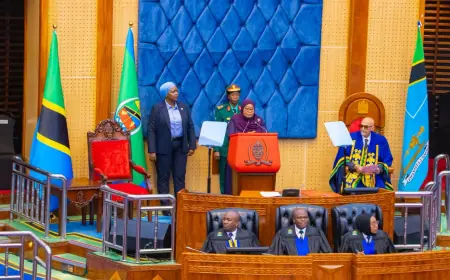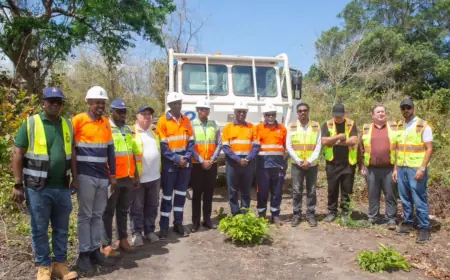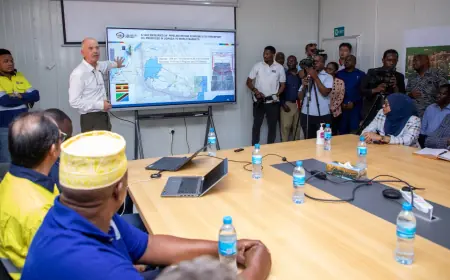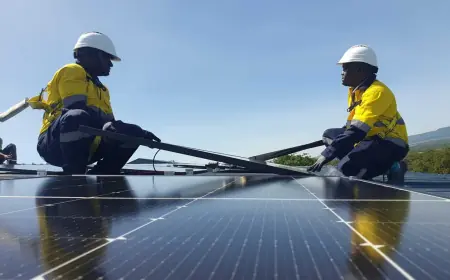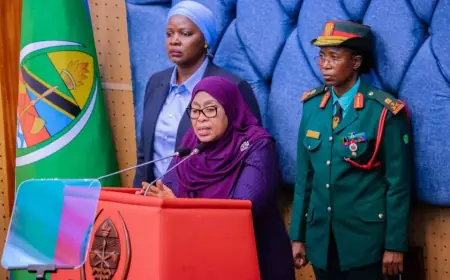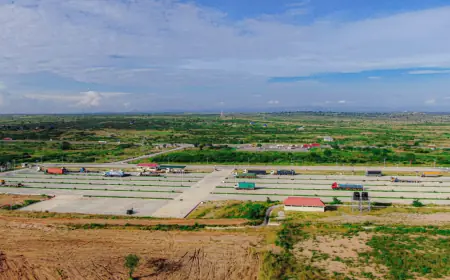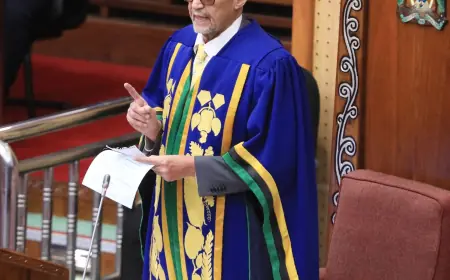Tanzania aims for robust 6pc growth, despite currency pressures and rising debt
The government also intends to narrow the overall budget deficit to 3.0 per cent of GDP and ensure that foreign exchange reserves remain robust enough to cover at least four months of imports – a benchmark already comfortably exceeded in 2024
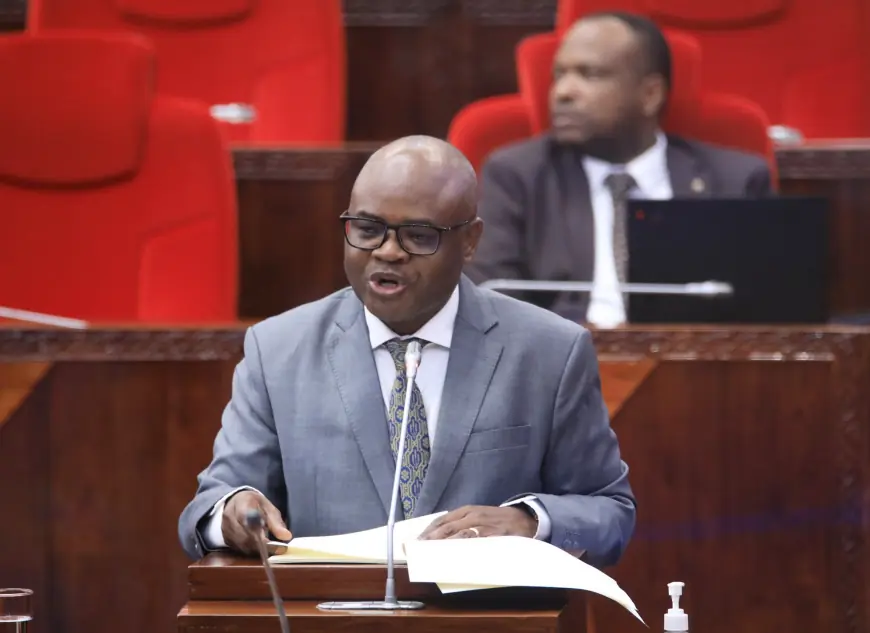
Dodoma. Tanzania is poised to accelerate its economic growth to 6.0 per cent in 2025, an increase from the 5.5 per cent projected for 2024, as the nation enters the final stretch of its Third Five-Year Development Plan (FYDP III).
This crucial blueprint serves as the primary mechanism for delivering on the ambitious targets of the Tanzania Development Vision 2025.
Speaking in Parliament on Thursday, June 12, whilst tabling the annual State of the National Economy report, the Minister of State in the President’s Office (Planning and Investment) Prof Kitila Mkumbo, said the 2025/26 Development Plan would be dedicated to consolidating the gains made since FYDP III commenced in 2021.
This strategic document is set to not only bring Vision 2025 to a successful close but also to lay the essential groundwork for the long-term Vision 2050.
“The Plan will prioritise those unfinished yet high-impact projects and programmes to ensure a seamless transition between our current and future development aspirations,” Prof Mkumbo informed MPs.
To achieve these aims, the government has established a series of ambitious macroeconomic targets.
Inflation is to be carefully managed, remaining within the desired single-digit band of 3.0 to 5.0 per cent.
Furthermore, domestic revenue collection is projected to rise to 16.4 per cent of GDP in 2025/26, up from an estimated 15.8 per cent in the current 2024/25 fiscal year.
“Tax revenue alone is anticipated to climb to 13.1 per cent of GDP, compared with 12.8 per cent,” Prof Mkumbo noted.
The administration also intends to narrow the overall budget deficit to 3.0 per cent of GDP and ensure that foreign exchange reserves remain robust enough to cover at least four months of imports – a benchmark already comfortably exceeded in 2024.
Despite this forward momentum, significant challenges persist.
Tanzanian shilling depreciates
Prof Mkumbo informed the august House that the Tanzanian shilling experienced a 9 per cent depreciation in 2024, trading at an average of Sh2,610.5 against the US dollar, compared with Sh2,395.7 the previous year.
He attributed this softening of the currency to tighter monetary policies being pursued by advanced economies, particularly the United States, in their ongoing efforts to curb inflation.
Nevertheless, the nation’s foreign exchange reserves remained stable, standing at a healthy $5.547 billion as of 2024.
This level is sufficient to cover 4.4 months of imports, thereby surpassing the national benchmark.
The Bank of Tanzania, through diligent monetary policy, successfully maintained stability in the interbank rate, which in turn contributed to a moderation of lending rates to 15.47 per cent in 2024, a slight decrease from 15.75 per cent in 2023.
Deposit rates also saw a favourable improvement, rising to 9.17 per cent, offering better returns for savers.
National debt
Concurrently, the national debt stock escalated to Sh107.7 trillion by March 2025, marking a 14.9 per cent increase from Sh91.7 trillion recorded a year earlier.
Of this total, Sh70.94 trillion constituted external debt, whilst domestic debt stood at Sh34.76 trillion.
This uptick in borrowing stems from the government’s continued investments in critical strategic infrastructure projects, including railways, roads, airports, power generation, and water supply.
On the production front, the economy expanded by 5.5 per cent in 2024, an improvement on the 5.1 per cent recorded in 2023.
Real GDP
Real GDP climbed to Sh156.6 trillion from Sh148.5 trillion, bolstered by enhanced performance in electricity generation – particularly following the commissioning of the Julius Nyerere Hydropower Project – as well as improvements in transport infrastructure, increased credit extended to the private sector, and higher public investment in social sectors such as education, healthcare, and water.
Key sectors that spearheaded growth in 2024 included arts and entertainment (17.1 per cent), electricity generation and distribution (14.4 per cent), information and communication (14.3 per cent), finance and insurance (13.8 per cent), and health (10.1 per cent).
Meanwhile, agriculture, construction, and mining and quarrying collectively accounted for nearly half of the national output.
Prof Mkumbo emphasised the pressing need to enhance productivity, particularly within the agricultural sector, which currently contributes a substantial 26.3 per cent to GDP.
“Improving productivity will be absolutely critical if agriculture is to lift more Tanzanians out of poverty and improve their economic standing,” he asserted.
To achieve this, the 2025/26 Plan outlines several key interventions.
These include boosting productivity across agriculture, livestock farming, and fisheries through improved access to quality inputs, expanding vital irrigation schemes, and completing the construction of a new fishing port.
Infrastructure investments will continue apace, notably on the Standard Gauge Railway (SGR), the ongoing refurbishment of Air Tanzania Company Limited (ATCL), and the expansion of rural road networks to better connect production areas with markets.
Further work will also proceed on the Kigongo–Busisi Bridge in Mwanza, the East African Crude Oil Pipeline (EACOP), and the enhancement of digital infrastructure to support ICT-driven productivity and service delivery across various sectors.
In the crucial energy sector, the government aims to significantly expand electricity generation, transmission, and distribution capacity.
Within the social sectors, the focus will remain firmly on education reforms, the expansion of healthcare services, ensuring clean water provision, and improving sanitation across the nation.
All these initiatives are viewed as fundamental enablers for developing a productive, healthy, and highly skilled population.
Employment creation also remains a central plank of the government’s agenda.
Between November 2020 and February 2025, a remarkable total of 8,084,204 jobs were generated – with 1,047,179 in the formal sector and 7,037,024 in the informal sector – thanks to the implementation of 12 dedicated employment stimulation strategies.
Looking ahead, the government plans to further refine and improve the business and investment climate through targeted reforms designed to attract and retain both local and foreign capital.
“We are diligently preparing a conducive and sustainable environment for long-term investment as part of our journey towards Vision 2050,” Professor Mkumbo assured Parliament.
As FYDP III draws to a close, Tanzania finds itself at a pivotal juncture. The country’s macroeconomic fundamentals display encouraging signs of resilience and progress.
However, the dual challenges of currency depreciation and a growing public debt present palpable risks.
Navigating this complex economic landscape will undoubtedly demand disciplined fiscal management, continuous productivity-enhancing reforms, and sustained engagement with the private sector to successfully realise both the immediate objectives of Vision 2025 and the broader, more ambitious aspirations of Vision 2050.
What's Your Reaction?
 Like
0
Like
0
 Dislike
0
Dislike
0
 Love
0
Love
0
 Funny
0
Funny
0
 Angry
0
Angry
0
 Sad
0
Sad
0
 Wow
0
Wow
0
